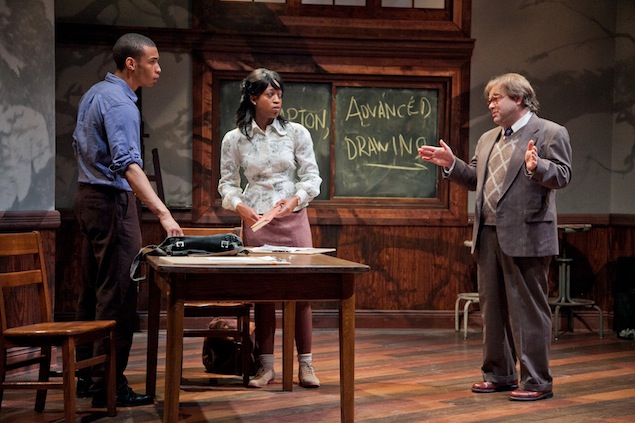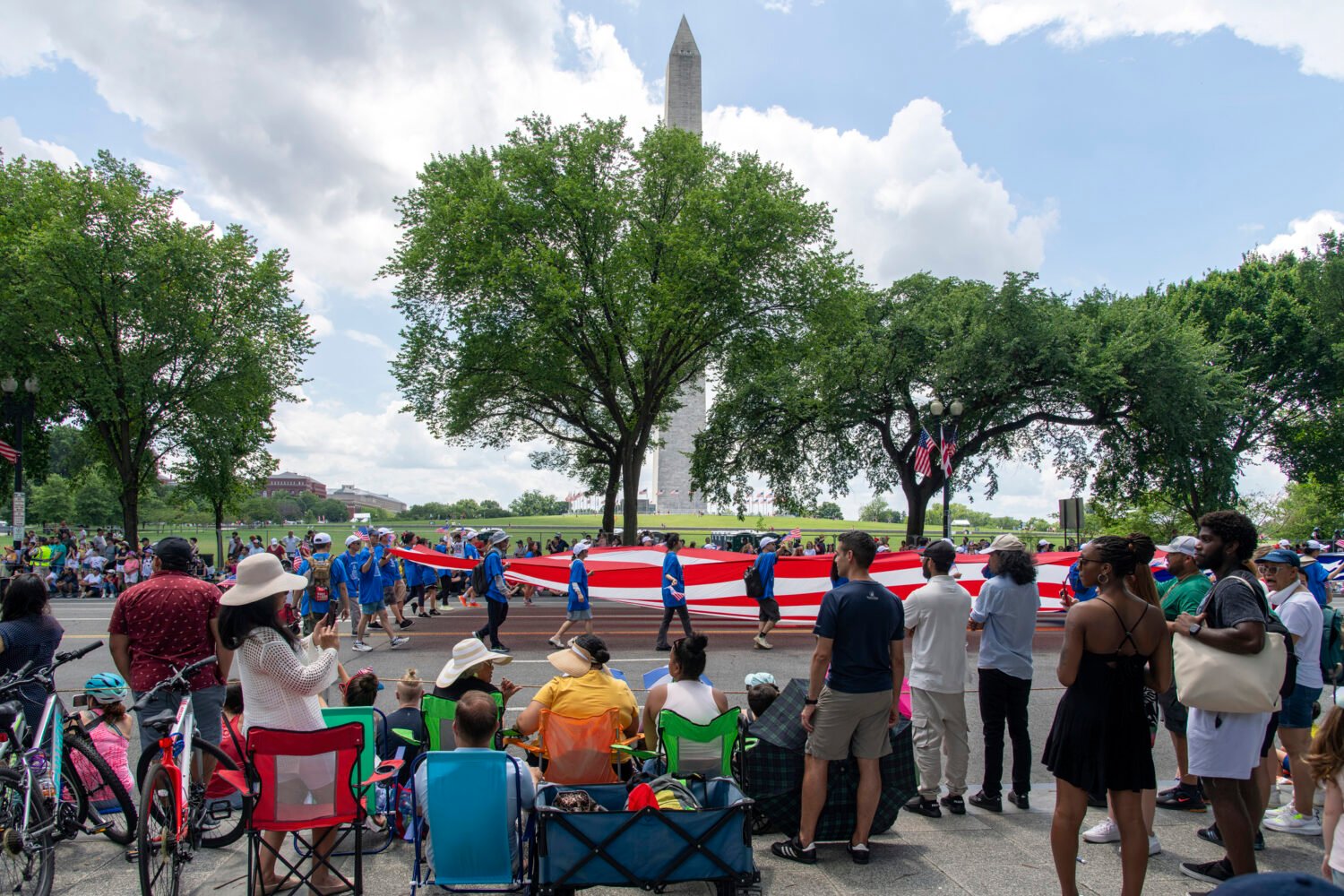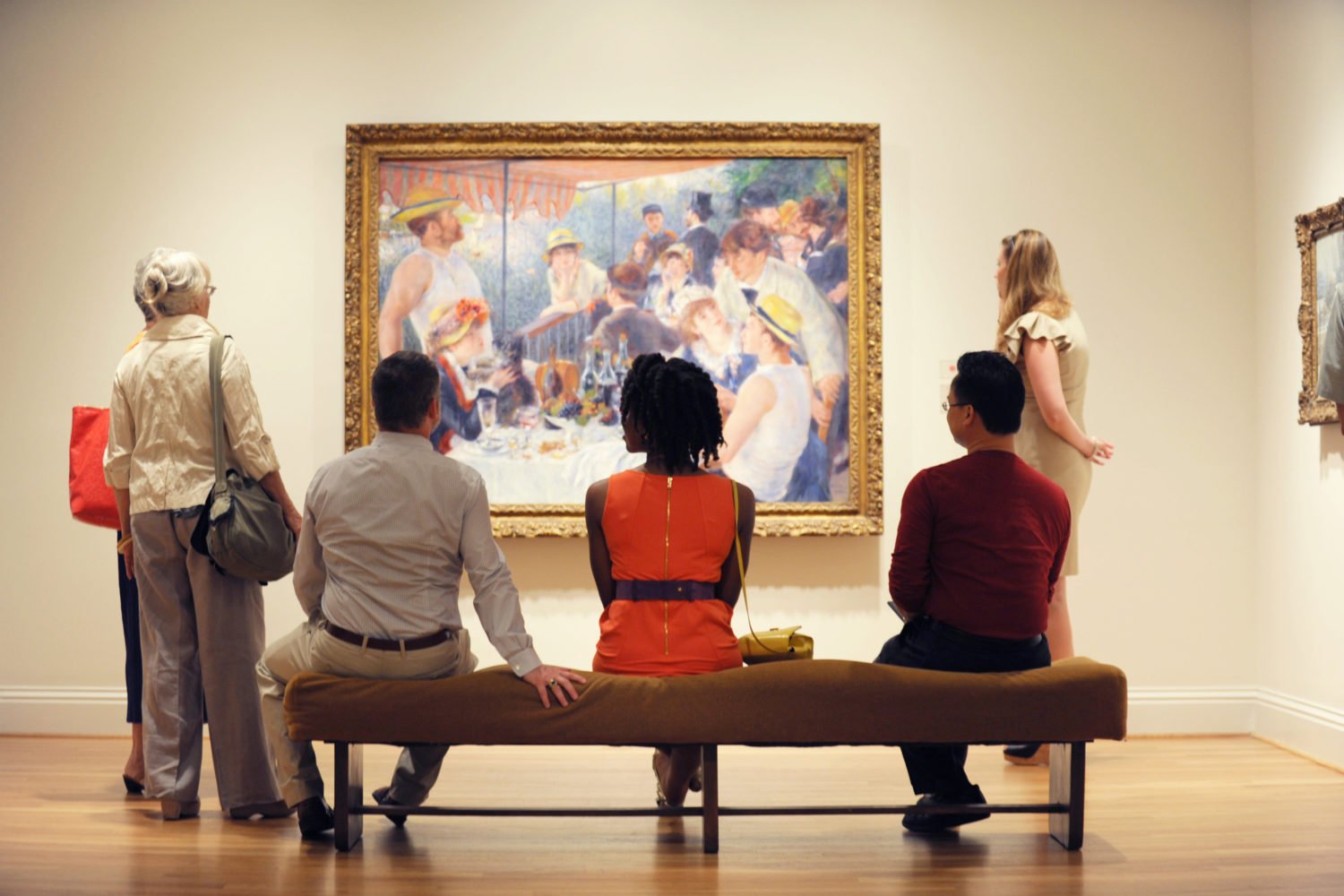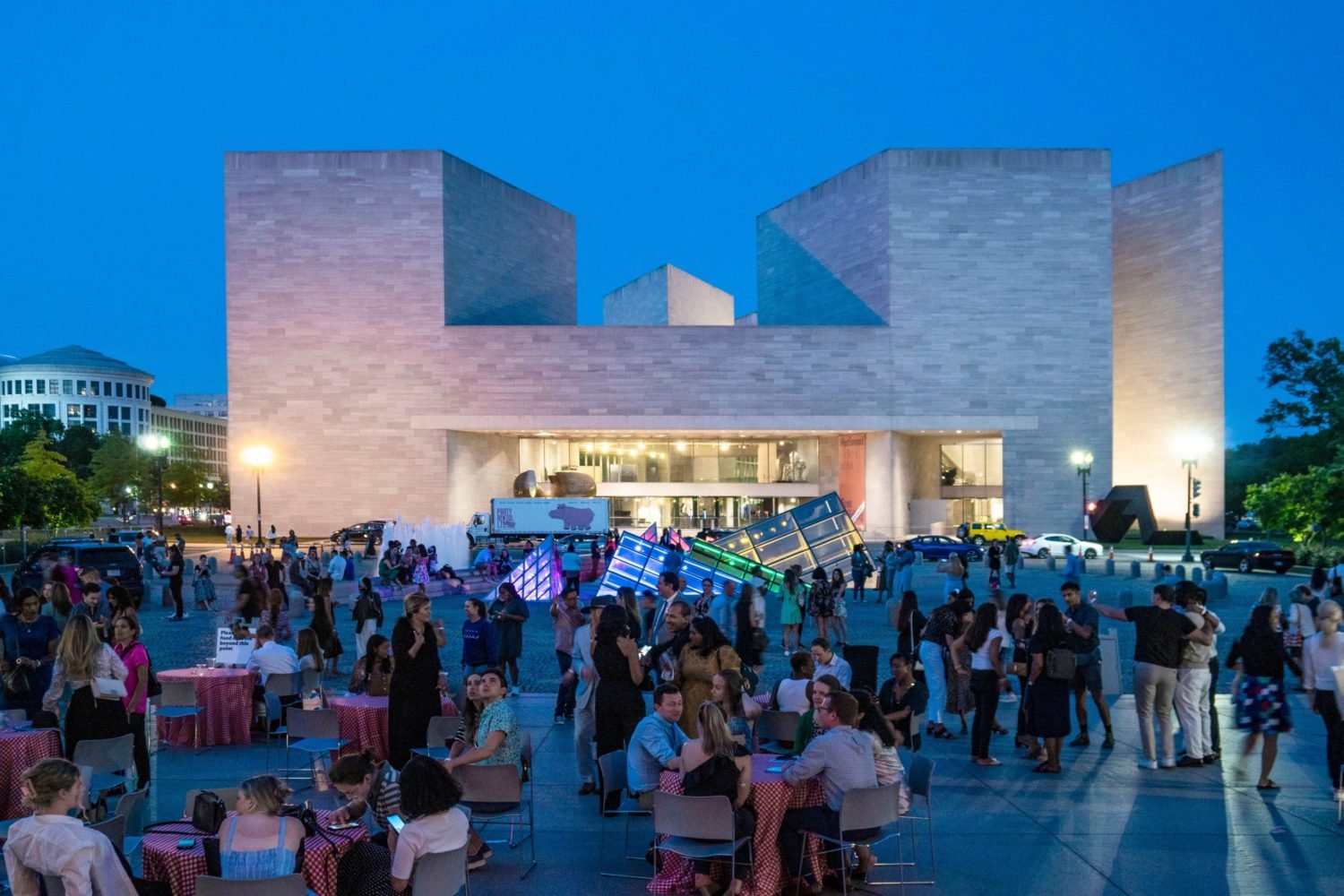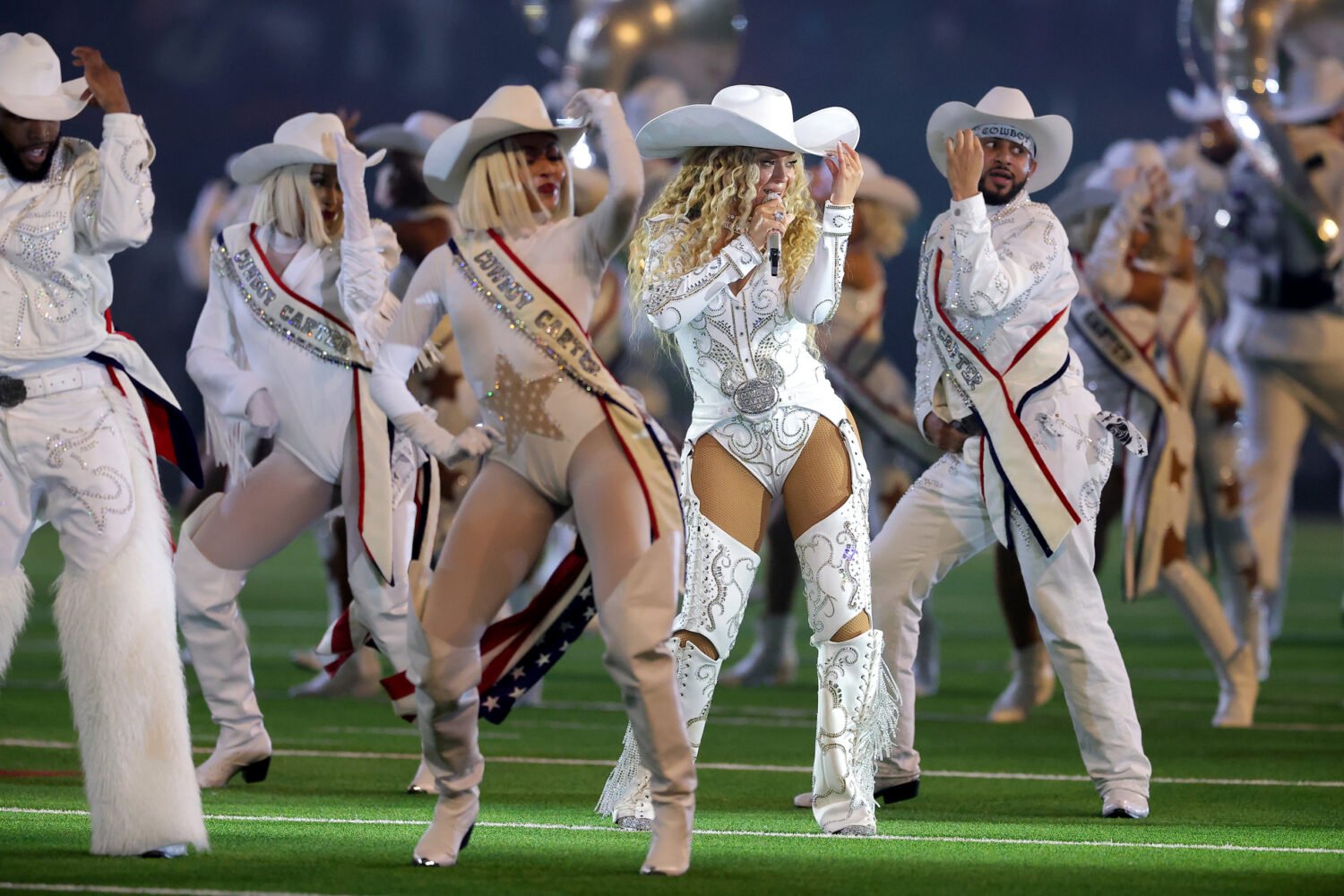
In many ways,
The Hampton Years is a play about race, but what
Jacqueline E. Lawton’s new work has to say about art can be just as compelling.
The play, set in a Negro college in Hampton, Virginia, shows the intersection of the
African-American and Jewish communities around World War II. Bringing together characters
from both backgrounds is professor Viktor Lowenfeld (Sasha Olinick), who has fled Austria from the Nazis and has a quest to start an art department
at the trade-focused school. Though a liberal and well-meaning figure, Lowenfeld is
a complicated guy whose ambitions, optimism in human nature, and subconscious prejudices
can get in the way of doing what’s best for two of his promising students, John Biggers
(a versatile
Julian Elijah Martinez) and Samella Lewis (the dynamic
Crashonda Edwards).
Lawton’s thoughts on art and aesthetics help give
The Hampton Years heft without making it pretentious. Lowenfeld (a real-life scholar; the play is inspired
by actual artistic figures), who has training in psychology as well, is fascinated
with how artistic talent develops in children as they get older. He’s also hung up
on the idea that art should be sensory and story-based rather than visual, a feeling
that both pushes Biggers to make his work more complex and pushes away Lewis, whose
instincts lie in making art that is beautiful for its own sake. In
The Hampton Years, director
Shirley Serotsky and scenic designer
Robbie Hayes have an interesting staging trick that helps drive home the creative inspiration of
the art students—the subject matter of their work, whether it’s African tribal dancers
or struggling soldiers, come to life behind a screen built into the set.
Serotsky navigates Lawton’s characters through the challenges they face in the play,
from the repercussions of living in segregated Virginia to the ambivalence many young
soldiers felt going off to war to the difficulties artists confront in reacting to
criticism that comes from influential but hardly objective sources. The impressive
wood-accented set, detailed and cozy, helps communicate the disorganization of Lowenfeld’s
office (a classroom chalkboard notes the passing of time). A mural of a tree also
gives reference to one of Hampton’s signature landmarks, upon which school president
Malcom Shaw MacLean (Colin Smith) is fixated.
Though part of
The Hampton Years’ tension comes from fights between Lowenfeld, with his burgeoning but less than profitable
art department, and the college’s administration, the play is subtle enough not to
turn its characters, including reluctant school administrators, into clear-cut villains
or heroes. Its figures, from the fiery black art teacher and artist Charles White
(David Lamont Wilson) to Lowenfeld’s wife, Margaret (the charming
Sarah Douglas), struggling to find her place in her new country, have more depth than that. It
takes
The Hampton Years longer to wrap up each person’s story than it probably should, but regardless, we’re
invested in their future, thanks to a strong ensemble cast that universally makes
each feel like an individual rather than a sketch.
The Hampton Years is at Theater J through June 30. Running time is about two hours
and 15 minutes. Tickets ($45 to $60) are available via Theater J’s website.

